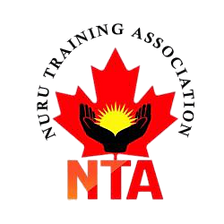Governance & Planning
Ensuring accountability, transparency, and sustainability through structured leadership and participatory planning.

At Nuru Training Association (NTA), strong governance ensures transparency, accountability, and inclusivity. Our governance framework reflects our commitment to gender balance, democratic participation, and community-centered decision-making.
1. General Assembly
Composed of 20 members (13 women, 7 men).
Meets once a year to make key organizational decisions.
Functions as the highest decision-making body of NTA.v
2. Board of Directors
8 members (5 women, 3 men).
Elected for a renewable 5-year term.
Meets at least 4 times a year (quarterly), and whenever necessary.
Oversees policy, strategy, and overall direction.
3. Control Commission
3 members (2 men, 1 woman).
Reports directly to the Board of Directors.
Ensures compliance with statutes, internal rules, and financial integrity.
4. Coordination Committee
Serves as the executive body of NTA.
Works closely with the Administration Officer and the Program & Finance Officer.
Oversees day-to-day operations and program execution.
5. Participatory Approach
NTA emphasizes community participation in decision-making.
Beneficiary communities are actively involved in:
Initiation of projects
Design and implementation
Monitoring and evaluation
This ensures inclusivity, ownership, and sustainability.
Planning Process
The planning process at NTA aligns organizational strategies with available resources and community needs. It ensures that programs are impactful, realistic, and sustainable.
1. Annual Action Plans
Developed by senior managers in collaboration with the executive secretariat.
Guided by the 2021 – 2025 Strategic Plan.
Reflect strategic priorities and emerging needs.
2. Resource Consideration
Plans account for existing resources (human, financial, material).
Include expected contributions from partners and stakeholders.
Ensures effective allocation and sustainability.
3. Strategic Review
The 2021 – 2025 Strategic Plan is reviewed annually at the General Assembly.
Adjustments are made to adapt to new challenges and opportunities.
Promotes flexibility, responsiveness, and relevance.
Through its governance structure and participatory planning, NTA ensures that its programs are transparent, inclusive, and aligned with community priorities. This approach strengthens accountability and positions NTA as a reliable partner in driving sustainable social change.
